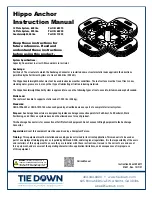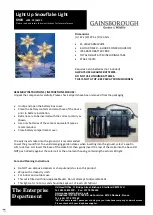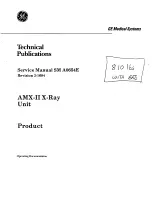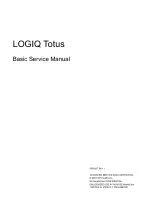
TIE DOWN
Safety Products Division
800-241-1806 • 404-344-0000 • www.tiedown.com
E1831, Rev. 10/7/21
2
Hippo Roof Anchor
Rescue Plan:
When using this equipment and connecting subsystem(s), the employer must have a rescue plan and the means
at hand to implement and communicate that plan to users, authorized persons2, and rescuers3. A trained, on-site rescue team
is recommended.
Inspection Criteria:
The Anchorage Connector shall be inspected by the user before each use and, additionally, by a Competent
Person other than the user at intervals of no longer than one year. Results of each Competent Person inspection should be
recorded on copies of the “Inspection and Maintenance Log”.
After a Fall:
If the Anchorage Connector is subjected to the forces of arresting a fall, it must be removed from service immediately,
clearly marked “DO NOT USE”, and then either destroyed or forwarded to Tie Down for replacement or repair.
Proper Use and Path:
A clear path is required in the direction of the use to assure positive locking of an SRD. Do not obstruct
the use or path of use of The Hippo Counterweighted. Working in confined or cramped spaces may not allow the body to reach
sufficient speed to cause the SRD to lock if a fall occurs.
Hazards:
Use of this equipment in areas with environmental hazards may require additional precautions to prevent injury to
the user or damage to the equipment. Hazards may include, but are not limited to: heat, chemicals, corrosive environments,
high voltage power lines, explosive or toxic gases, moving machinery, sharp edges, or overhead materials that may fall and
contact the user or Personal Fall Arrest System.
Fall Clearance:
There must be sufficient Fall Clearance (FC) to arrest a fall before the user strikes the ground or other
obstruction. Clearance is affected by a number of factors including: Anchorage Location, (A) Lanyard Length, (B) Lanyard
Deceleration Distance or SRD Maximum Arrest Distance, (C) Harness Stretch and D-Ring/Connector Length and Settling.
Refer to the instructions included with your Fall Arrest subsystem for specifics regarding Fall Clearance calculation.
Swing Falls:
Swing Falls occur when the anchorage point is not directly above the point where a fall occurs. The force of
striking an object in a swing fall may cause serious injury or death. Minimize swing falls by working as directly below the
anchorage point as possible. Do not permit a swing fall if injury could occur. Swing falls will significantly increase the
clearance required when a Self-Retracting Device or other variable length connecting subsystem is used.
Fall Protection Compatibility:
Only use ANSI and OSHA compliant products in conjunction with Tie Down products. Contact
either Tie Down or the manufacturer of your fall protection subcomponents if you have further questions. Connectors (hooks,
carabiners, and D-rings) must be capable of supporting at least 5,000 lbs. (22.2 kN). Connectors must be compatible with the
anchorage or other system components. Do not use equipment that is not compatible. Non-compatible connectors may
unintentionally disengage. Connectors must be compatible in size, shape, and strength. If the connecting element to which
a snap hook or carabiner attaches is undersized or irregular in shape, a situation could occur where the connecting element
applies a force to the gate of the snap hook or carabiner. This force may cause the gate to open. Self-locking snap hooks and
carabiners are required by ANSI Z359 and OSHA.
Making Connections:
Snap hooks and carabiners used with this equipment must be self-locking. Ensure all connections are
compatible in size, shape and strength. Do not use equipment that is not compatible. Ensure all connectors are fully closed and
locked. 3M connectors (snap hooks and carabiners) are designed to be used only as specified in each product’s user’s
instructions. Do not connect snap hooks and carabiners.
Installation:
Prior to installation, read all instructions. Proper installation must be verified by a Competent Person or a
Qualified Person. Sweep area of loose material where The Hippo Anchor will be placed.
Planning:
Plan your fall protection system prior to installation of The Hippo Counterweight Anchor. Account for all factors that
may affect your safety before, during and after a fall. Consider all requirements, limitations, and specifications. In Section 2
and Table 1. Determine the proper location of The Hippo Counterweight Anchor. It must be flat (5° slope or less) and be at least
8 ft (2.5 m) away from the edge of the structure or any openings such as skylights or doorways, and as close as possible to the
work area.


























